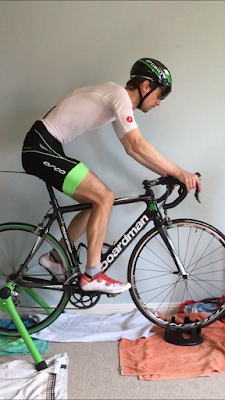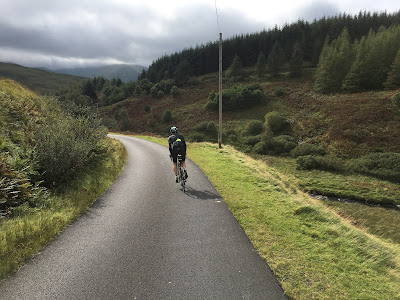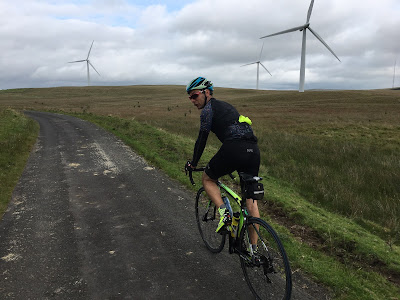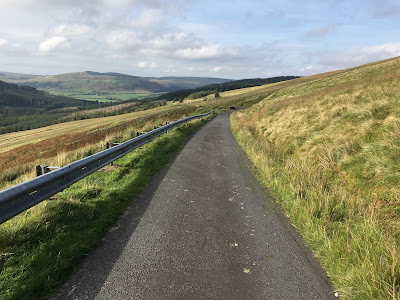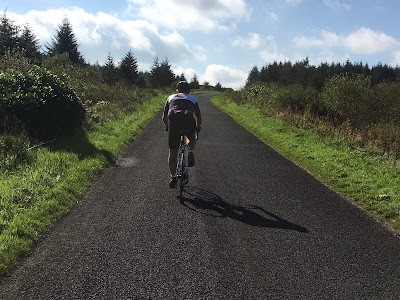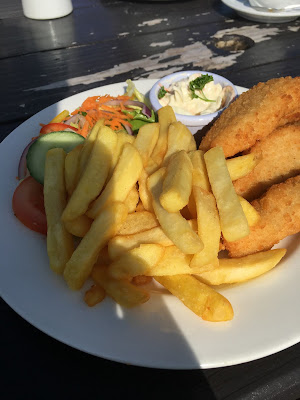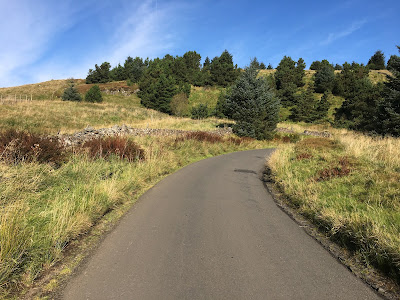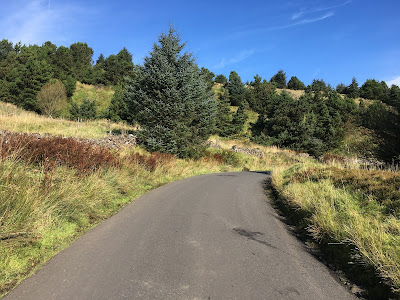2020 in review, from a triathlon point of view...
On a scale of A to F:
Swimming – showed some potential but overall a C
John started the year with great intentions of becoming a much better and faster short-course swimmer, rather than a plodding (or whatever the swimming equivalent of plodding is – Plopping? Cruising?) steady-state Ironman swimmer. 2020’s target was going to be trying to win the M35-39 category at the world sprint triathlon championships in Edmonton, and so improving his swimming was going to be important.
He managed to get his head round having to swim multiple times per week in order to achieve this. He read several books on how to swim. He took things so seriously that he even saw a swimming coach for the first time in his life. Armed with a variety of new drills, he drilled like crazy. He intended to drill repeatedly for a few months and then really ramp up speed training. The drills seemed to be working, and at the end of each 2000 metres or yards of drills (depending on which pool he was in), he swam a 200m/y time trial, and his 200m time fell from something like 3:10 after the off-season to 2:45 after drilling for a couple of months.
Sadly he still refuses to tumble turn. Assuming tumble turning gains 2-3 second per length, his 200m pool time could be 2:30. Doing the 200 tt fresh might give another few seconds. Another couple of months of training might have given him another few seconds. So a theoretical 2:20 for a pool 200m should surely translate into a low-10 open water 750m. He thought this would be good enough.
Then coronavirus hit. He naively continued to hope Edmonton
would go ahead, but his few sensible braincells told him not to spend a fortune booking the whole the trip, but rather to wait and see how the summer would pan out. He should
cultivate these sensible braincells and encourage them to grow and reproduce.
He bought a set of swim cords and continued to “swim” furiously in his flat. He was unable to buy a gym bench as these were all sold out, so he couldn’t lie down to mimic his swimming. So, stand-up swim-cording it was for months ad months, several times per week. Then all events were cancelled so it didn’t really matter any more.
He then enjoyed a few swims in various different lochs, but is
still scared of the sea. He learned the hard way not to pee in his wetsuit
until he is absolutely sure he is committed to getting in the water (or maybe
he just needs to toughen up and not be such a wimp upon his feet contacting
cold water).
He made some good, and fairly cheap purchases, not at all dubious, from a German website – a figure-hugging, silver body suit (a thermal swim skin he would have you believe) and a tight rubber tank top (a wetsuit top he would have you believe) and wearing these two items underneath his thermal wetsuit permitted him to survive and even enjoy his cold loch swims.
Then the open water got too cold and he got back into what
for him is a much more benign environment – a swimming pool. His 200m time had
tragically slipped back to 3:20. Very disappointing. After drilling over 5-6 sessions, it came down to 3:00, and now the
pools shall be shut again so it’ll be back to the swim cords...
Cycling – developed good bike legs but no races to show for it,
overall A
John did a fair bit of winter/spring hybridding – on a big heavy slow steel contraption with fat tyres, to which he attached Shimano Ultegra clippy pedals. He looked a right eejit with his expensive bike shoes, proper cyclist leggings and jacket, protective eyewear and fluorescent helmet, when you’d normally expect to see a conventionally-dressed Joe or Josephine Public on such a contraption.
When coronavirus struck, he continued to ride his hybrid as it was slow and he therefore couldn’t go as fats or as far on it as on a road bike. It was good for leg strength, and he overtook all manner of road bikes on his repeats of the Arthur’s Seat hill, sometimes to a soundtrack of “wtf”. As the season wore on, he even did a 100-miler on his hybrid. This was unintended, he was just enjoying the spin and decided to just do a ton mid-ride. Therefore it was neither fuelled nor hydrated correctly and he suffered like a dehydrated dog in the days that followed, with his urine the colour of Irn-Bru and smelling even worse.
He combined this hybridding with some good turbo sessions, totalling 6 bike sessions/350km per week on many occasions. In the absence of any racing, he decided he would go for an outright all-time 20-minute power PB on the turbo. He last did one of these horrendous exercises in self-flagellation in 2015 (or maybe 2016, the horror of it seems to have led to the destruction of the particular part of his brain responsible for remembering FTP tests).
His previous PB was 330 watts for 20 minutes, weight unrecorded but suspected around 65kg (5.08w/kg). Incredibly, John carried out a number of these horror-fests between April and June 2020, seeing his power increase from 310 watts to 326 watts, and his weight drop from 69kg in the off-season to 63kg immediately after the 326 watt horror-fest. He didn’t quite achieve the 330 watt previous PB but did achieve a new w/kg PB of 5.17.
When you think about it, the effort and agony and time
required to increase power from 310 watts to 326 watts – an increase of a whole
16 watts – well, clearly it was time very well spent. Was it not?
John trialled these torture sessions in various different positions and using various different apparatus and equipment. Various noises of distress and pain were made in the course of the sessions. He would have you believe he is a triathlete…
With the same level of fitness, he found that his maximum was on the TT bike in the upright position (326 watts), while on a road bike in the upright position he was only capable of 320 watts. In the aero position on the TT bike, it was lower still, at around 310 watts). Then he realised he couldn’t continue this torture indefinitely, so he looked for alternative methods of torture.
He decided to do an “Everesting” – riding up and down a hill literally all day until achieving the same altitude gain as climbing Mount Everest. On his road bike, not his hybrid. His road bike felt like a slick, quick magic carpet in comparison to the hybrid.
Despite his father’s insistence about Everesting that “that CANNOT be good for you”, John decided this was a worthy way to spend a day. John wanted to find his physical and mental limits. He set a date. Couldn’t sleep. Called it off. Set another date. Couldn’t sleep. Called it off. Set another date. Couldn’t sleep. Was sick of the preparation process, sick of loading and unloading a month’s worth of food and drink and kit into and out of his car. Sick of watching the daylight drop away in the evenings. Decided it was now or never. Went and did it. Didn’t reach mental or physical limits, could have carried on indefinitely. Had to bail at just shy of 10,000m altitude gain when it got dark and rabid bats and hungry angry badgers and weasels and stoats and haggises etc all came out of the woodwork and started ganging up on him. On returning home at 1am he could not egress his car and had to call for assistance. He was crimped, moulded and locked into something like a foetal bike-riding position.
He was forced to call “Old Jimmy The Physio”. For data protection purposes, Old Jimmy may well be old, he is certainly old-school, he may well not be called Jimmy, and he may not even be a qualified physio. The call went like this:
John: “Hi Jimmy, I hear you are back in business again, it’s your favourite patient here...”
Jimmy: “Oh Christ not you again…”
After a few torture sessions with Old Jimmy, John’s back was able to straighten again.
In the autumn John took a week off work and for 7 days, he rode his bike every day. In perhaps the best example of good fortune all year, this week coincided with the best weather all year. John hates the cold but wore shorts every day for 7 days straight. He developed a cyclist's tan, with bright white feet, brown lower legs and knees, and spectacular white quads.
He had no intent or agenda initially for this week other than simply to ride his bike in endurance fashion rather than interval fashion, then after a couple of days he decided he would try to hit 1000km for the 7 days. John was surprised by how strong he was, particularly on day 7. Day 6 was a 100-miler and day 7 was something like 240km and he was riding really strongly. John deemed it his best week of 2020.
Not for the first time, he wondered about riding the Tour de France. He has wondered about this since he was about 6 years old. Perhaps one day he might join the real world. John googled “Tour de France tours” and was appalled at the costs. John wondered if anyone he knew had a campervan and 3 weeks spare in July…
Then there was nothing left for 2020 so it was just some
gentle turbo training with low motivation for the rest of the year. Despite
still wanting to believe he is “young”, John continues to act like a stubborn
old-timer and still refuses to engage with Zwift like all the cool kids have
been doing this year. Maybe it would do him good, but he sticks to his dumb
turbo, numbing his mind still further with every minute spent on it…
Running – can’t dress this up any other way, abject failure, undoubted F
This was John’s worst running year ever, without doubt. He probably came back too quickly after Kona. He should have given himself more time off after what was effectively a 13-month season.
He ran his usual Greencastle 5 on Boxing Day 2019, then developed a very sore knee. The Ulster XC championships were less than 2 months later and he ran in severe pain for 2 months to try to get fit. He managed to be half-fit, and slogged round a horrendous course, and scored for the team. But it hadn't been good. John then ran the Scottish Veteran relays as a V35 (AKA a vet, or basically an old man).
X-rays and MRIs were lined up, then the knee miraculously recovered overnight. Then his foot got sore, and when all events got cancelled, he ran a couple of virtual races, they didn’t float his boat, then running became worse than, say, hoovering or changing the beds. Running was painful and not relished any longer, and let’s face it, it became pointless. There was nothing to train for and so John packed his running in for 3-4 months.
He then tried to start again in the late summer, having
grudgingly admitted that had Edmonton gone ahead, he would have been in serious
trouble with his lack of running. His legs were horrendously deconditioned so
even though he was fit (for cycling), his legs couldn’t cope with even slow
runs and his foot was no better anyway. He continued to run once or twice a
week, the foot got worse and worse, and he finally decided things weren’t going
to get better of their own accord. A recent X-ray has proven inconclusive and
sadly Santa did not bring an MRI machine...
Triathlon – Grade E
John pinned his entire 2020 on one single race. It didn’t
happen. No triathlons were done in 2020. He did do one single “home triathlon”
– some weights and swim cords, followed by a turbo, followed by a run. It was
just a short one. Not done particularly hard. A poor substitute for the highs
of 2019…
Thinking about how to go faster – A* grade
John spent considerable time, effort and brainpower, and also a few quid, pondering every single aspect of his short-course and long-course racing in order to try to improve, so that he could try to win the M35-39 world sprint triathlon, and in order that he could go sub-10 at Kona. In carrying out this pondering, he failed to ponder the fact that he can barely run, that there is a global pandemic, and that it took him 10 years to actually get to Kona in the first place. To do sub-10 at Kona would mean actually having to qualify to go back to Kona.
Nonetheless, John identified almost 20 things that he could do with his training, equipment and race execution that would make him faster. The only unrealistic thing was buying a £10k road bike and a £10k tri bike. Everything else was realistic. He had implemented/bought many of these – an aero stem, faster tyres (which his bike mechanic, whom he deems the best bike mechanic in the world, when trying to get them onto his wheels, “lost skin”, which means if John punctures on these tyres he’s going to have to do a Normann Stadler and sling his bike into the nearest lava field, or field), latex tubes, a newfangled faster tri suit, aero calf guards, aero socks and plenty else. He was even getting his head around shaving his legs. He reckoned he could go 2-3 minutes faster in a sprint triathlon and 15-30 minutes faster in an Ironman.
Another thing he did in his quest for speed and improvement was post in an unfailingly polite manner on a well-known, predominantly USA-based triathlon forum where he has also spent some time lurking. He had noted that there were semi-regular “critique my bike fit” discussions on this forum, and there appeared to be some properly decent bike fitters who offered comments and suggestions. So he decided that he would give it a go. His TT bike in particular could probably have a more aggressive position. So he upheaved his living room, cleared space against a wall, moved his turbo and bike etc up against this wall, and made a few films, and put the question to the forum.
He received some really helpful advice: “Dude eat some
cheeseburgers.” “Dude you’re skinny.” “Jesus you’re lean, I’d say gain some
weight.” “I’d suggest you invest in a razor for your hairy legs.” Others
assumed unlimited money and suggested shorter cranks and various different
saddles. John wished he had £1000 to drop on trying shorter cranks, but his
idea was to try to optimise what he has.
One guy was particularly helpful and John now has much more aggressive positions on both bikes. But sadly it’ll be a good while before these new positions, and indeed all the other bits and pieces he has changed, can be put to the test in anger.
John would like to wish everyone all the very best for 2021…
John wonders what 2021 has in store. John will firstly need to get his foot sorted in order that he can run, or never mind run, but walk properly. If that can be done, John will need to decide what he wants to do. It is likely, with the world sprint triathlon championships so late in the season, in Bermuda October 2021, that John could attempt a sub-32 10K in the late spring/early summer, and then switch focus to Bermuda training. John would like to win in Bermuda. John wonders how "easy" travelling will be in late 2021, and how the coronavirus situation will be by then, and whether it will be feasible to go to Bermuda at all, if indeed it goes ahead. Who knows. But the foot must be put right first of all.








